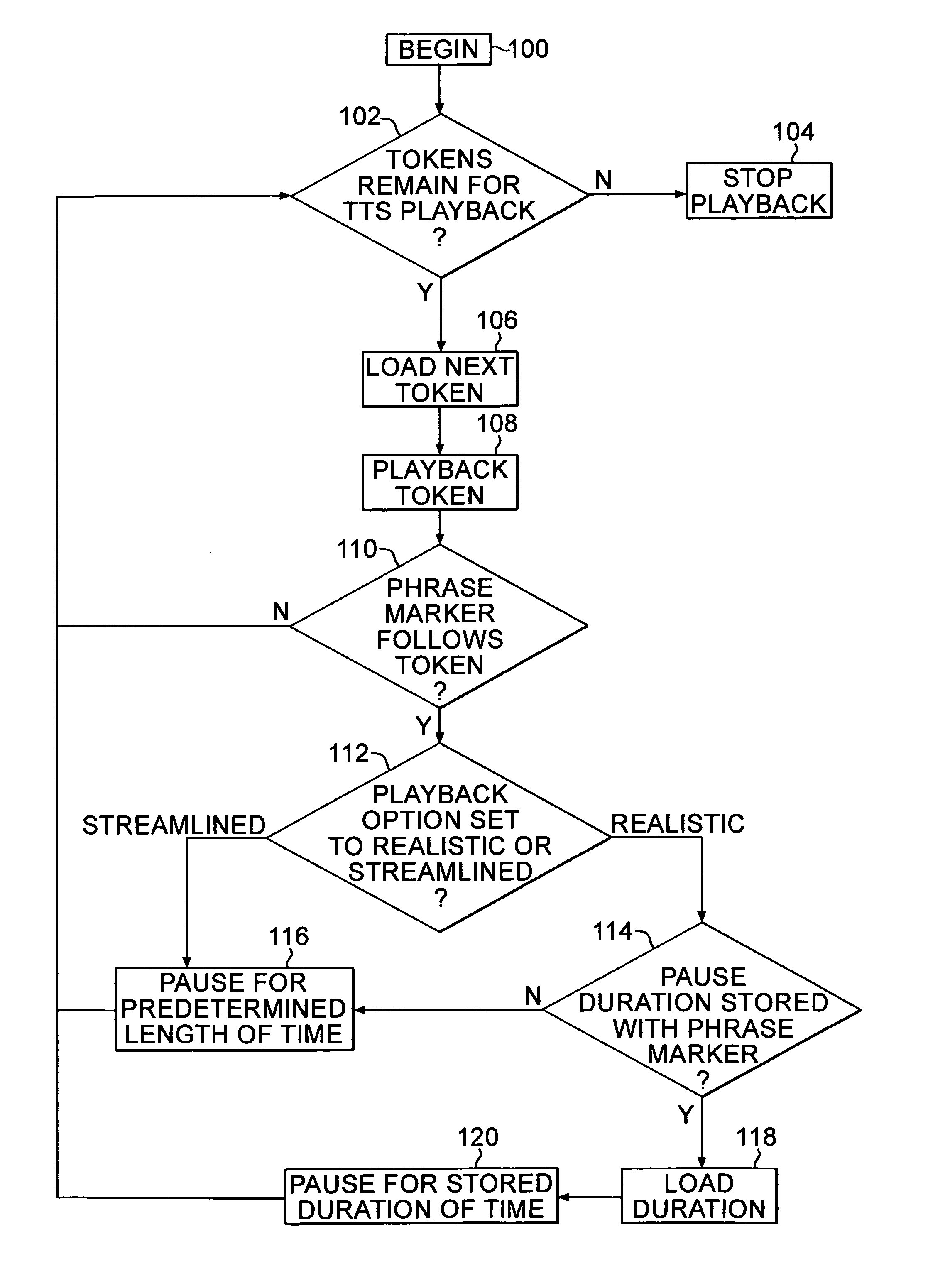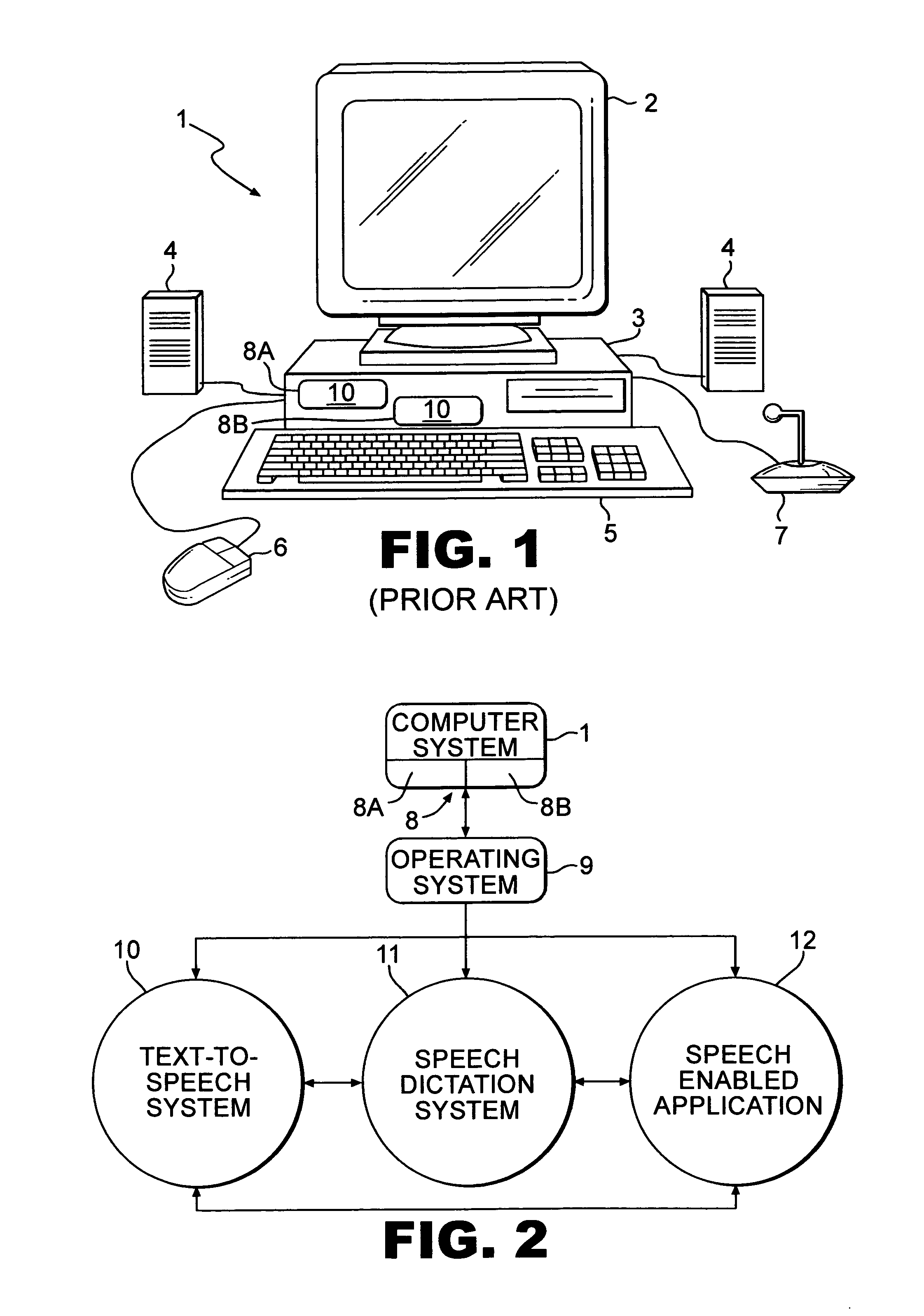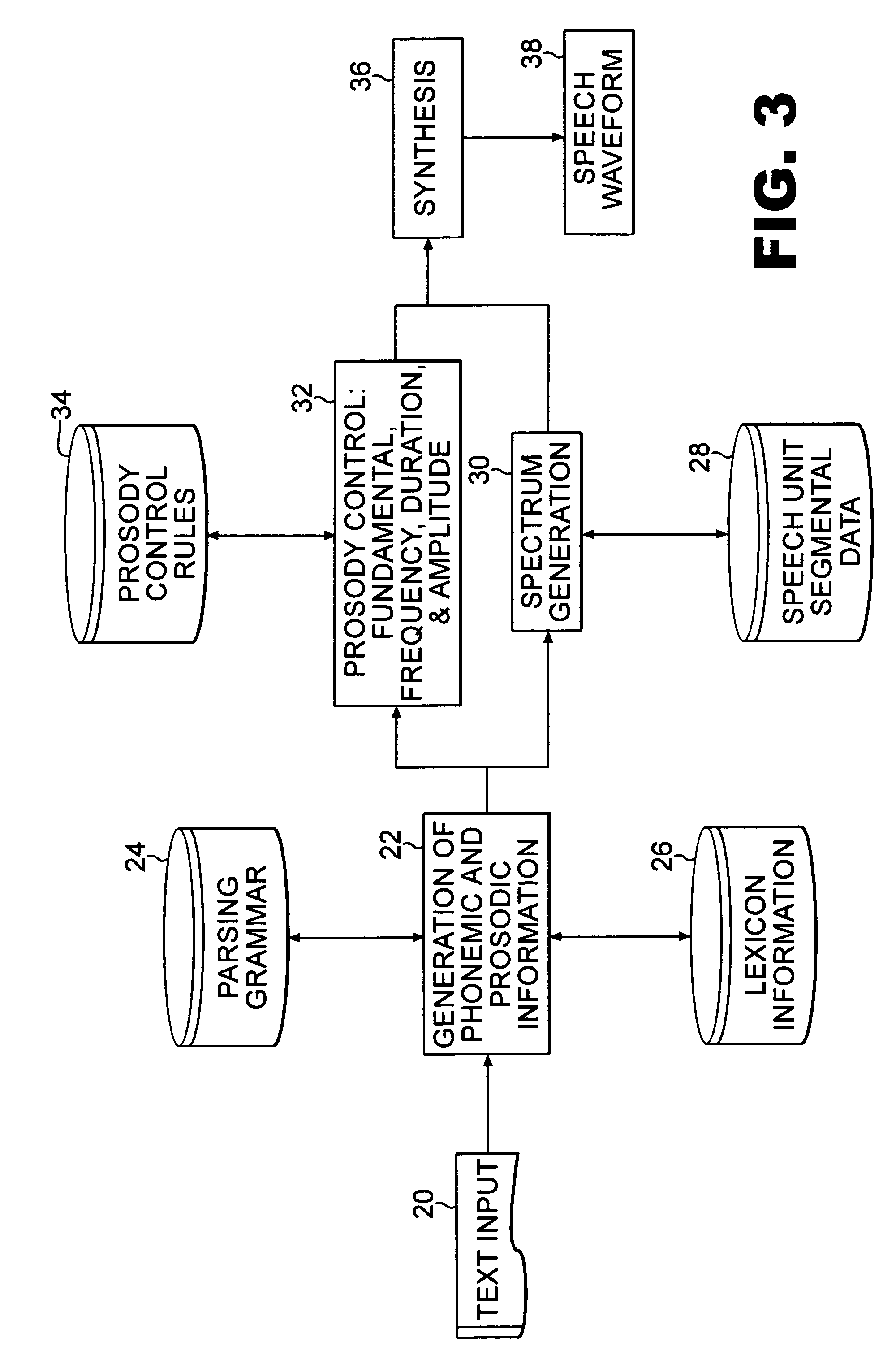Method for guiding text-to-speech output timing using speech recognition markers
a text-to-speech and output timing technology, applied in the field of text-to-speech synthesis, can solve the problems of monotonous sound, boring, difficult to follow the meaning, and affecting the accuracy of speech recognition, so as to achieve natural and realistic playback
- Summary
- Abstract
- Description
- Claims
- Application Information
AI Technical Summary
Benefits of technology
Problems solved by technology
Method used
Image
Examples
Embodiment Construction
[0022]In a preferred embodiment of the present invention, a method for guiding text-to-speech [TTS] output timing using speech recognition markers can improve the naturalness of playback timing for TTS playback of dictated text. A TTS system in accordance with the inventive arrangements can perform TTS playback in a manner in which the TTS system more accurately imitates the timing of dictated text. Consequently, a TTS system in accordance with the present invention can can exhibit more appropriate pausing behavior during TTS playback than TTS playback generated by TTS playback production rules alone.
[0023]A TTS system in accordance with the inventive arrangements can utilize timing information previously stored in data corresponding to the dictated speech during a speech dictation session. The timing information, specifically, “phrase markers”, can be inserted by a speech dictation system during speech dictation. The phrase markers can support ancillary speech dictation features. A...
PUM
 Login to View More
Login to View More Abstract
Description
Claims
Application Information
 Login to View More
Login to View More - R&D
- Intellectual Property
- Life Sciences
- Materials
- Tech Scout
- Unparalleled Data Quality
- Higher Quality Content
- 60% Fewer Hallucinations
Browse by: Latest US Patents, China's latest patents, Technical Efficacy Thesaurus, Application Domain, Technology Topic, Popular Technical Reports.
© 2025 PatSnap. All rights reserved.Legal|Privacy policy|Modern Slavery Act Transparency Statement|Sitemap|About US| Contact US: help@patsnap.com



